I just made a batch of bread-and-butter pickles and suddenly my sandwiches are sunnier. A few days eating on a cruise has me looking for added bursts of flavor wherever I can find them and pickles and other condiments are an easy fix. If you have never ventured into the pickle realm, bread-and-butters are a good place to start. They don’t take much time or expertise. Although I introduce the concept of lacto-fermentation this week, I’m not going to go into detail about natural ferments until the summer, when there will be an overwhelming bounty of fresh produce that needs preserving. —Mitchell
I’ve been spending a lot of time over the last few years joy riding on the lacto-fermentation bandwagon. Lacto-fermentation is the name given to the process of souring, pickling, or otherwise preserving foods by taking advantage of the effect lactobacillus bacteria have on sugars in a saline environment. The process is an obsession of chefs these days, many of whom have their own fermentation labs, and of natural-health enthusiasts, who believe the live cultures support a robust microbiome. For the record, I’ve been lacto-fermenting pickles and a few other things for decades, ever since I made my first batch of kosher dills using Mimi Sheraton’s recipe in From My Mother’s Kitchen, probably 35 years ago. Nate is often afraid to go into our cupboards for fear of what he might find bubbling away. I’ll go into more detail on lacto-fermentation in a future newsletter.
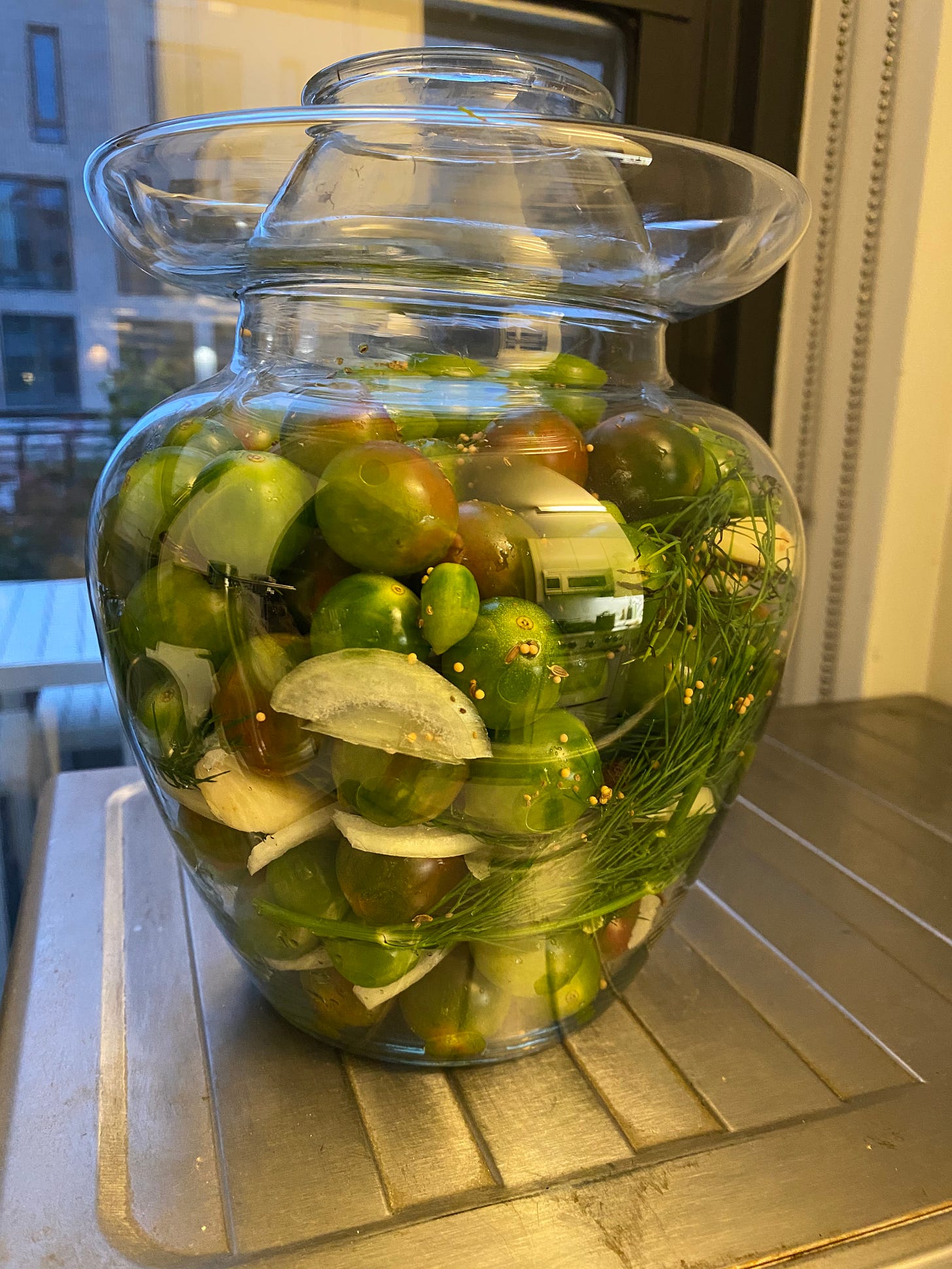
But in all the hype about natural ferments, I almost forgot about how great non-lacto-fermented pickles can be. These are pickles that rely on vinegar for their sourness, which, come to think of it, has already been fermented. In particular, I’m newly obsessed with the classic bread-and-butter pickle, a sandwich staple that originated in the American south and that deserves a rightful place along other preserves.
The name bread-and-butter pickles is a bit of a mystery, though a sandwich of fresh white bread, sweet butter, and these flavorful pickles sounds pretty good to me right now. The first recorded use of the name and the pickles dates to 1923, when Cora and Omar Fanning of Illinois registered a trademark for their brand. But it seems obvious these flavorful pickles existed in household pantries before they made their way into the bureaucracy of the U.S. government.
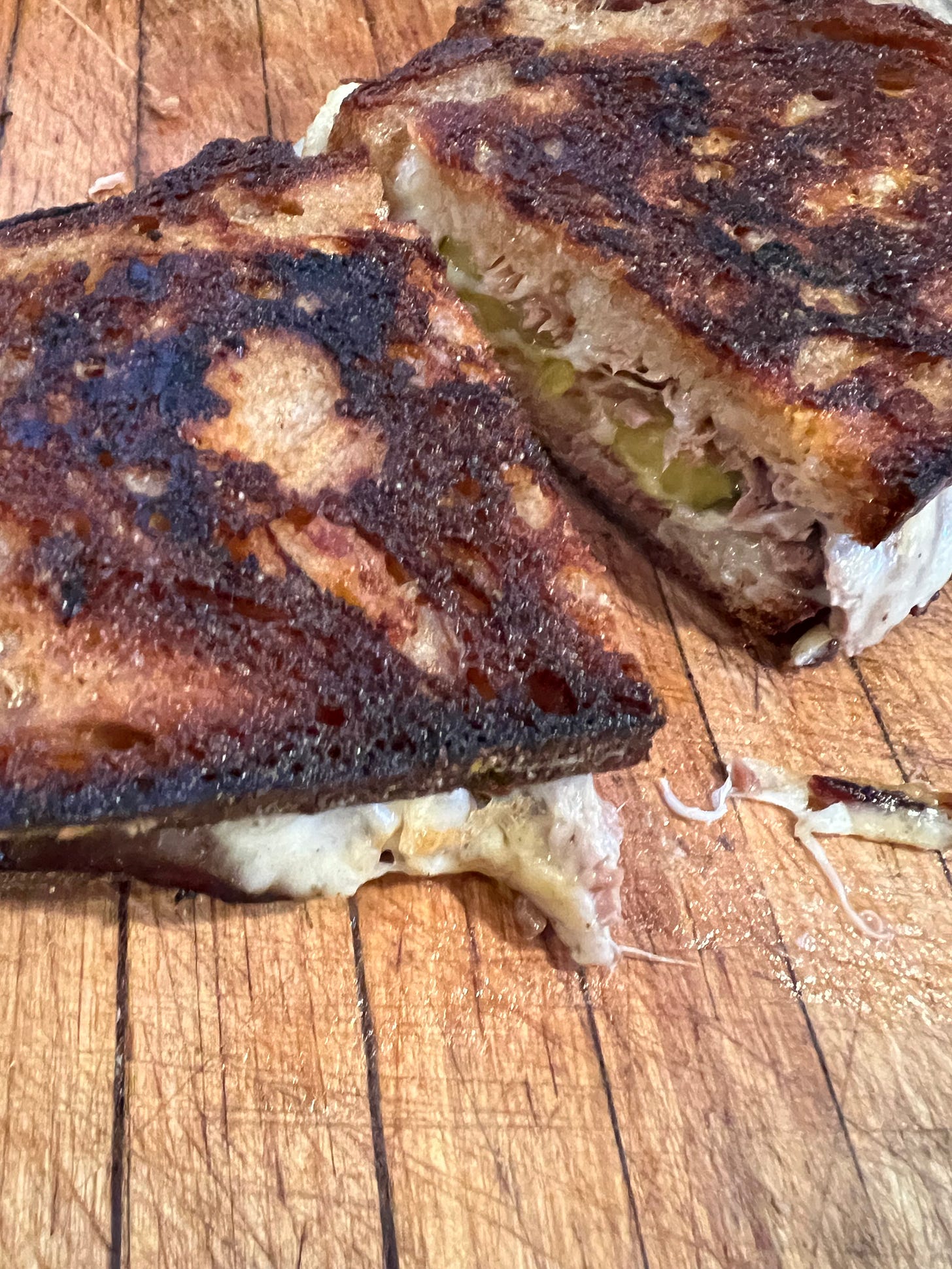
While we were in Maine over the holidays, our friends had a jar of long, thick, ridged, commercially produced slabs of bread-and-butter pickles that I ended up using on a number of different sandwiches throughout the week. The color, flavor, texture, and tartness of bread-and-butter pickles is a wonderful complement to most sandwiches, particularly rich ones, such as the Rubens I made with smoked brisket. Oh, and hamburgers. And everything else. They are also delicious chopped in salads, especially potato.
Although I included my recipe for bread and butter pickles in Kitchen Sense, which came out in 2006, I hadn’t made any in several years. When I got home from Maine, I promised myself (and Nate, who didn’t really know what I was talking about) that I’d make a batch.
To do so, I revisited my own recipe, tweaking it a tiny bit to add a few more spices. I also wanted to emulate the ridged slabs we had in Maine, so I purchased a crinkle-cut knife. Although the knife was designed for potatoes, it did an okay job on the cucumbers. You can also just cut them crosswise into slices.
Vinegar-based pickles are a good thing to make in winter because they are quick and you don’t need to rely on the most pristine summer produce. About the only challenge is finding Kirby cucumbers, the best for pickles, now that those small, smooth, thin-skinned, hyrdroponically-gown Persian cucumbers have nudged out most other cukes. After looking in a couple of grocery stores, I spotted a pile of Kirbys in a nearby Fairway. Kirbys work best because, once pickled, their thick, crunchy, unwaxed skin gives a welcome contrasting texture to their soft, meaty insides. Larger cucumbers are waxed to increase shelf life, which renders them useless for pickling, and others, such as English and Persian, are too thin-skinned to hold up to pickle processing.
The distinctive flavor of these pickles, besides the vinegar (for which I prefer a milder apple cider or rice vinegar to plain white vinegar), are celery seed and turmeric, which was deployed generously by picklers even before it was considered a natural panacea. I add black pepper and bay to round out the flavor. Some coriander seed adds a nice floral component, as well. Once you find the right cukes, the rest is easy. In a few days you have delicious pickles.
RECIPE: Mitchell’s Bread-and-Butter Pickles
2 pounds Kirby cucumbers (about 8, depending on size), rinsed, patted dry, and sliced about ¼-inch thick
1 medium white onion, peeled and thinly sliced
¼ cup kosher salt
1 ¾ cups apple cider or rice vinegar
1 ¾ cups sugar
1 teaspoon celery seed
1 teaspoon yellow mustard seed
1 teaspoon ground turmeric
1 teaspoon black peppercorns
½ teaspoon coriander seed (optional)
2 or 3 bay leaves, torn into pieces
In a large bowl, layer the sliced cucumbers and onion, sprinkling each layer generously with the kosher salt. Fill the bowl with water, add a few cups of ice, and refrigerate for 6 to 24 hours. This soaking in chilled water helps maintain crispness in the final pickles.
Once soaked, let the cucumbers and onion drain in a colander. In a large, nonreactive saucepan, combine the vinegar, sugar, celery seed, yellow mustard seed, turmeric, peppercorns, coriander, if using, and bay leaves. Set over medium-high heat and bring to a boil. Reduce the heat and simmer for about five minutes for the flavors to infuse. Turn the heat up to high, add the drained cucumbers and onion, and bring back to a simmer. Remove from the heat. Don’t let them cook beyond that.
Using tongs or a slotted spoon, while hot, transfer the pickles to 2 very clean quart jars or 4 pint jars. You can pack them tight. Ladle the hot pickling liquid into the jars to cover, leaving about ¼ inch head space before wiping the rims and screwing the lids on tight. Let cool to room temperature and refrigerate. The pickles are best after they have sat for a week, but you can eat them as soon as they are chilled. They will keep six months to a year, by when they will have lost some of their crunch but they will still be delicious.
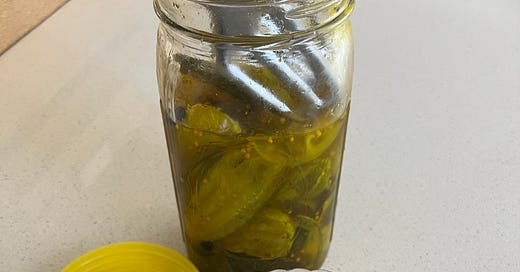


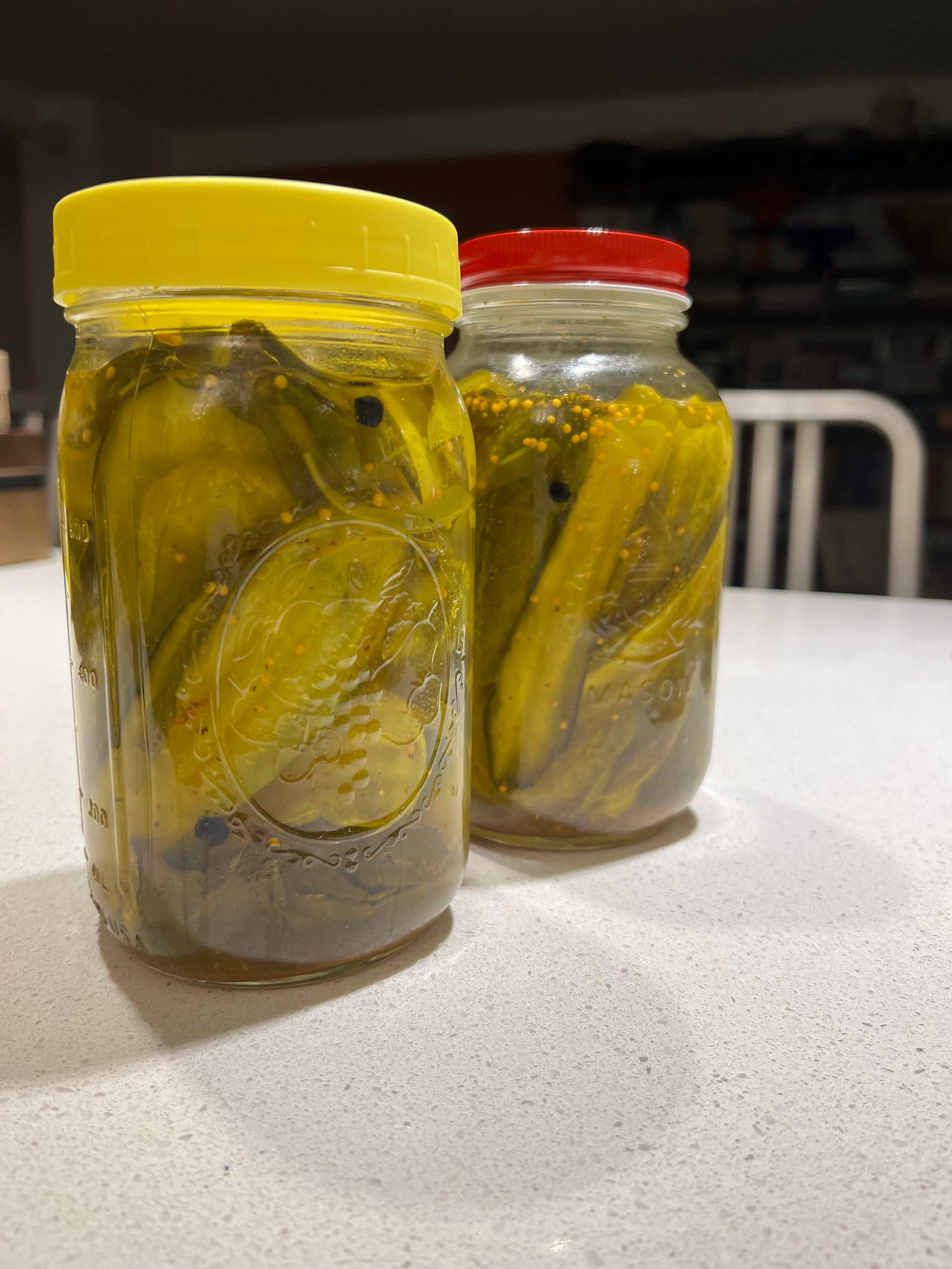
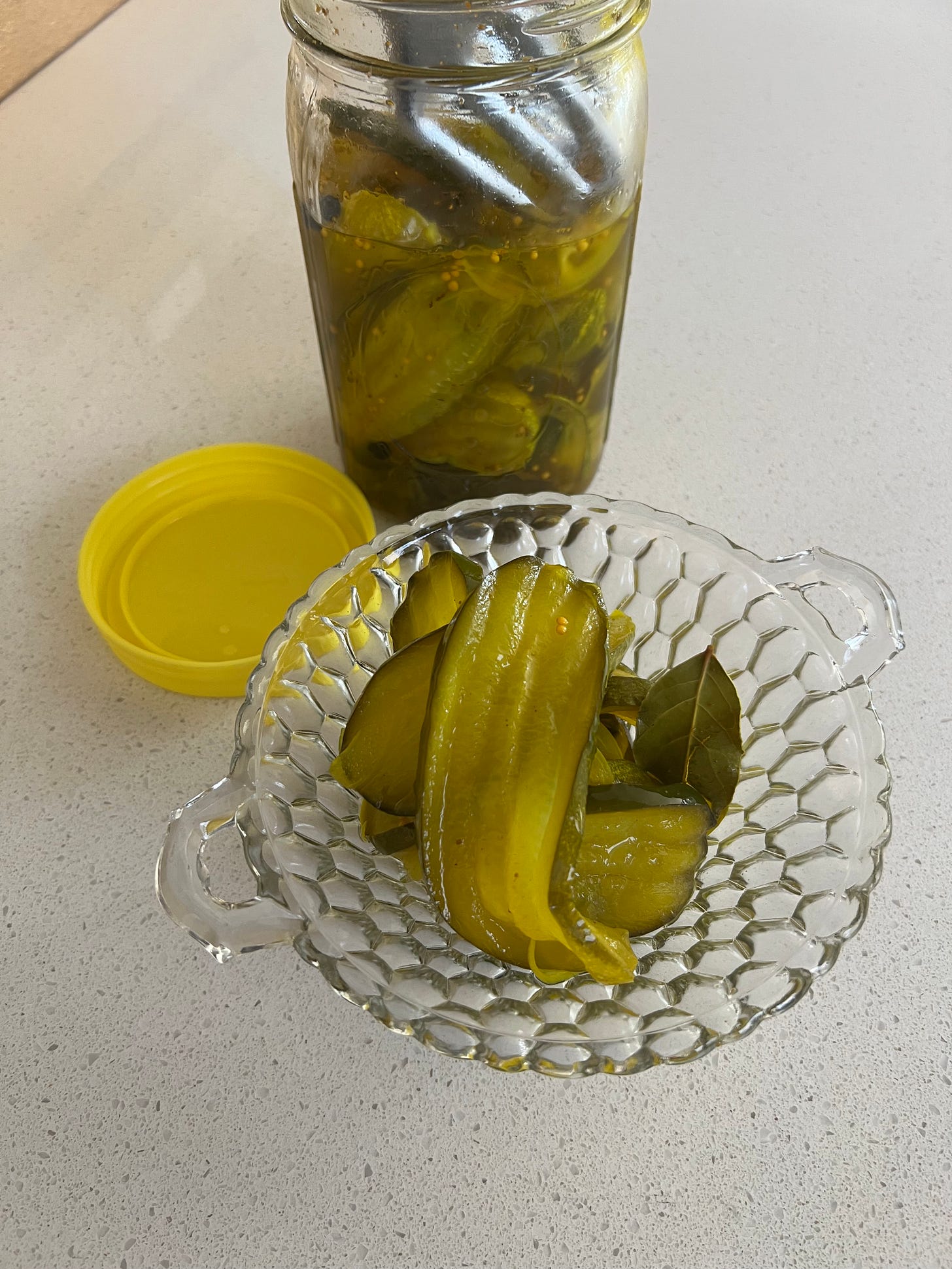
I'm loving this because I love B&B pickles which I've been making most of my adult life and my mother and grannies made before me. But I prefer mine sliced horizontally, not vertically. Why? I dunno, that's the way we always did it. On a personal note, I think the sliced onion is almost as important as the cukes themselves. But where or where did you get the misperception that these originated in the South? Yet another attempt to wrest culinary glory from New England?